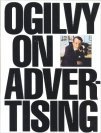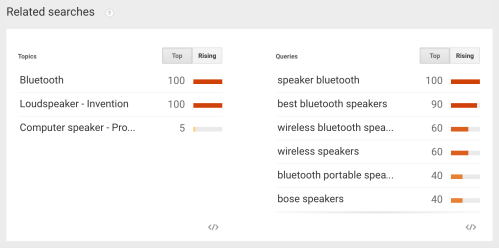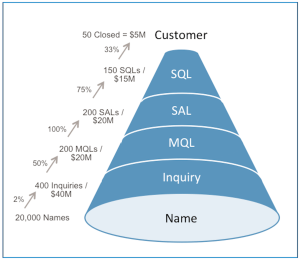Tim Matthews's Blog, page 5
July 25, 2016
Four First Steps to Make Your Marketing Authentic
Estimated Reading Time: 3 minutes
 Authenticity. Everyone wants it. Nobody wants anything inauthentic. Fake. Substitute. Artificial. Ersatz. Even though it’s intuitive, too many marketers ignore this basic desire and put out advertisements and campaigns that come across as phony.
Authenticity. Everyone wants it. Nobody wants anything inauthentic. Fake. Substitute. Artificial. Ersatz. Even though it’s intuitive, too many marketers ignore this basic desire and put out advertisements and campaigns that come across as phony.
Marketing needs to be authentic. Marketers need to understand that their customers want something real and deliver it to them in every way – in the product, in the promotion, and in their language. No customer wants to be sold. Or on the receiving end of hype. Why is it that a marketer can plainly tell a friend at a backyard barbecue what their company does, but on Monday, when they get into the office, out come the superlatives, buzzwords and corporatespeak?
Truth is, consumers are savvier than ever. Think back to commercials you’ve heard from the early days of radio and television. They sound smarmy, right? We are exposed to so much more media today that when we hear something inauthentic that sounds like marketing – as opposed to just talking to us as a customer – our shields go up.
Contributing to this wariness, in my opinion, is that social media exposes us to direct and candid language every day. In the bright light of all that social conversation, typical marketing copy is exposed for what it really is.
I can’t tell you how to be authentic. You have to adopt it as a mindset. But here are four ideas to get you started down the path.
Source your products and ideas from your customers. This is an age-old practice in marketing that’s often ignored. Let me give you a recent example of how to do this. I’m a big soccer fan, and of Major League Soccer (MLS). I’ve enjoyed watching the startup league develop over the years. About fifteen years into its existence, MLS management realized that going after soccer moms and Hispanic Americans was the wrong marketing strategy. MLS had right in front of them hard-core soccer fans who wanted to connect with its teams in a deep and real way. Yet the league wasn’t marketing itself that way.
Around that time, a new club called New York City FC came into the league. The New York club wanted to connect with the fans and establish a true New York identity. What did they do? They sourced their logo from the fans, and then they let the fans vote on their favorite. In soccer, the crest, as it’s called, has a special meaning to soccer fans. Sourcing the crest directly from the fans was a brilliant idea. The club didn’t end up using any of the submissions verbatim, but their designers used many of the ideas from the fan submissions. That wasn’t even the important part. The fact was that they asked – that they cared – created a deep connection and respect from the fans. A very different approach than my local soccer team, the San Jose Earthquakes, whose logo, to me, makes no sense, has no connection with an earthquake, and was done without any input from fans like me.
Secondly, speak directly and plainly. Can we finally retire the adjective modifier ‘cutting-edge’? Does anyone really want a cutting-edge or state-of-the-art product? Why do we speak like this? Drop the hype, the superlative, the empty promises. Customers don’t need that. They just want to understand what something is and how it works, and maybe how it’s better. No need to lay it on thick. Just tell them straight and customers will appreciate it. It’s more like a direct, authentic conversation.
Next, use your customers’ words. Why struggle to write about your product in a way that tries to convince somebody else to buy it when you’ve got customers who are already convinced? We all know the power of referral sales, the net promoter score, and word of mouth marketing. Spend more of your marketing time connecting with customers, asking them for their advice, and for their comments. Ask them how they would describe your product, and then use their words not yours in your marketing copy. Their words will connect with your future customers much more directly, and be much more authentic than you can ever imagine. A very easy exercise you can do tomorrow is to conduct a short survey of your customer base. Ask them these two questions:
Why did you buy our product?
What would you say to someone thinking about buying our product?
Chances are high you will get some interesting phrases and buyer motivations you can use in your marketing copy.
Last, be honest. By this I mean be transparent. When you make a mistake, own up to it, don’t spin it. When you can’t do something, explain why. When you have done something that has hurt your customers, apologize and let them know how you’re going to make sure it doesn’t happen again. Nobody’s perfect. Customers understand this. Quite often they will thank you for the clear and prompt communication. That’s the way to build loyalty, by having honest, which is a close cousin of authentic, conversations.
These are but four ways you can be more authentic in your marketing. I hesitated when I drafted this article as it seems sort of inauthentic to present a recipe on how to be authentic. Authenticity is a mindset, not a prescription. There are many ways to do it. Do what works for you. Most importantly, be yourself.
June 27, 2016
Marketingspeak: What Is Greeking? And Why Is it Latin?
Estimated Reading Time: 1 minute
Marketingspeak is my occasional series on interesting words I encounter in my day job in marketing. I do my best to channel the late great William Saphire, whose ‘On Language’ column brought a smile to my face many a Sunday. – TM
 Greeking is a typesetting technique where intentionally incomprehensible dummy text is used to test the layout of a document. Since the reader can’t understand the text, they focus on the layout, which is the point. Plus, the designer doesn’t have to wait for the content to be finished to start working. The term was derived from the common idiom “It’s Greek to me,” itself from Shakespeare’s Julius Caesar.
Greeking is a typesetting technique where intentionally incomprehensible dummy text is used to test the layout of a document. Since the reader can’t understand the text, they focus on the layout, which is the point. Plus, the designer doesn’t have to wait for the content to be finished to start working. The term was derived from the common idiom “It’s Greek to me,” itself from Shakespeare’s Julius Caesar.
If you work in marketing, you have probably seen the words “Lorem ipsum dolor” when reviewing a new document or website design. These words are the most commonly used for greeking, and are a scrambled version of the Roman philosopher Cicero’s “The Extremes of Good and Evil.” In case you’ve forgotten it from high school Latin class, here’s the text:
Lorem ipsum dolor sit amet, consectetur adipiscing elit, sed do eiusmod tempor incididunt ut labore et dolore magna aliqua. Ut enim ad minim veniam, quis nostrud exercitation ullamco laboris nisi ut aliquip ex ea commodo consequat. Duis aute irure dolor in reprehenderit in voluptate velit esse cillum dolore eu fugiat nulla pariatur. Excepteur sint occaecat cupidatat non proident, sunt in culpa qui officia deserunt mollit anim id est laborum.
So yes, the most common form of Greeking is in Latin. But remember, the term means “make incomprehensible,” not “write it in Greek.” Using the Greek alphabet would likely be distracting to the document reviewer, which is what greeking sets out to avoid in the first place. Latin, on the other hand, uses the same Roman alphabet as English. As a dead language it is the least likely to be understood by the modern reader. (What’s used in Greece, Russia, Japan, China and other countries that don’t use the Roman alphabet I don’t know.)
Who invented the technique? No one knows the name of the printer himself, but the scrambled version of Cicero’s writing first appeared in a print specimen book in the 1500’s. It was popularized in the 1960’s by the British typeface company Letraset. Aldus, creators of PageMaker (now owned by Adobe), are credited with bringing the text online.
So, the technique came to us from an anonymous printer living during the Renaissance, using the writing of an ancient Roman philosopher, and termed in a nod to the most famous playwright of all time. Never has so much history been packed into a single paragraph we ultimately ignore.
June 13, 2016
Marketingspeak: Butter Bars and Hamburgers
Estimated Reading Time: 2 minutes
Marketingspeak is my occasional series on interesting words I encounter in my day job in marketing. I do my best to channel the late great William Saphire, whose ‘On Language’ column brought a smile to my face many a Sunday. – TM
 In an occupation chock full of fluff, it was nice to encounter these two hearty web marketing terms. No empty calories here. This combo is a protein-packed marketing value meal.
In an occupation chock full of fluff, it was nice to encounter these two hearty web marketing terms. No empty calories here. This combo is a protein-packed marketing value meal.
Butter bars are rectangular notifications that appear at the top of a web browser, typically used to inform the user of an error, ask if a password should be saved, or to highlight a new feature. The name was concocted by web developers who felt that the shape and color of the rounded yellow rectangle resembled a stick of butter. But the developers were not just being cute. In dev speak, rectangular notifications are also known as message bars or notification bars, or infobars in Chrome. Some felt that these names were too generic, as they were also applied to other types of messages on a web page. The term butter bar was coined to disambiguate these top notifications from other notifications or informational messages appearing in different places on the web page.
 The butter bar
The butter barA hamburger, in the online world, is an icon represented by three stacked, parallel lines. Clicking or tapping the hamburger reveals more menu items. Its design is meant to suggest “more here.” The hamburger first appeared on mobile apps, where skinny screens caused a space crunch for top navigation. Now the trend has jumped over to full sites for desktops and laptops, either for convenience in building one responsive design, or perhaps to appear hip.
 The hamburger and its namesake (Courtesy of Wikipedia)
The hamburger and its namesake (Courtesy of Wikipedia)Like the butter bar, the hamburger also has more staid names, including ‘side menu’ and ‘navigation drawer,’ and the inscrutable ‘basement.’ Unlike its oleaginous cousin, hamburgers are controversial. Here’s what Josh Constine of TechCrunch had to say. The title of his article, “Kill the Hamburger Button,” tells you on which side of the fast food line he comes down on:
Essentially, what’s out of sight is out of mind. Any navigation options you hide behind the hamburger will be forgotten, or at least used a lot less. It doesn’t help that the button is often placed in the top left corner — the hardest place to reach when using the phone with just your right hand.
 Whatever your opinion, I think the burger is here to stay. Just like the hamburger’s brother from another mother, the International Electrotechnical Commission’s on/off symbols, sometimes we just need to follow engineering’s lead. I know plenty of people who don’t know why one equals on, and zero equals off, much less that IEC 5009 on/off button (at right) is a blend of the two numerals.
Whatever your opinion, I think the burger is here to stay. Just like the hamburger’s brother from another mother, the International Electrotechnical Commission’s on/off symbols, sometimes we just need to follow engineering’s lead. I know plenty of people who don’t know why one equals on, and zero equals off, much less that IEC 5009 on/off button (at right) is a blend of the two numerals.
But I digress. Back in the web world, I would like to offer a challenge to web developers. We now have butter bars and hamburgers joining breadcrumbs and cookies. Dairy, meat, and grains – three of the four food groups – are covered. What about fruits and vegetables? Are nomenclature choices a reflection of our eating habits?
June 6, 2016
Marketingspeak – What’s a Burn Pixel?
Estimated Reading Time: 1 minute
 I’d heard of pixels being fired, but never burned. The term burn pixel was a new one on me.
I’d heard of pixels being fired, but never burned. The term burn pixel was a new one on me.
To understand burn pixels, you first need to know about tracking pixels, which are single, transparent pixels placed on web pages. We all encounter tracking pixels while browsing, we just don’t see them. When a web page is downloaded, so is the invisible tracking pixel. That allows the marketer to track how many people visited the page. In digital adman parlance, tracking pixels are “set” or “added” to pages, and “fired” when downloaded.
A burn pixel is a type of tracking pixel. It is used in retargeting (aka remarketing), which is a marketing technique where advertisers show display ads to people who visited and then left their website. When someone visits a site but does not convert, the ad network cookies the visitor, then displays ads on other sites served by the network. Retargeting keeps the company or product top of mind and works to compel the visitor to return. This is why you will see ads for products you searched for or browsed when on other sites later the same day.
Now let’s feel the burn. You don’t want to annoy users by showing them your remarketing ads forever and ever. Nor do you want to spend money retargeting visitors who already returned and converted. A burn pixel allows you to untag a visitor who has converted, or someone who seen your ads a set number of times as set by the frequency cap. Why it is called a burn pixel, and why “burning” equates to removing someone from a list, I have not been able to unearth, despite a few hours of Googling.
Where there’s fire, water is sure to follow, which leads us to the cookie pool. This is the group of cookies maintained by the ad network, representing all users who have visited your site and are targets for remarketing. The pool can be segmented in your retargeting efforts. You might segment them by the type of product, geography, device type, or other factors, and serve up different ads accordingly.
As those of you who read my blog know, I am fascinated by the evolution of the language we use in marketing. The fact that an ephemeral, invisible pixel can be discussed in such elemental terms as burned and fired is fascinating.
And speaking of evolution, I would be remiss if I didn’t mention the origin of the humble pixel. Such a fundamental part of our digital lexicon, we forget that it is a portmanteau of the words picture and element. Coined by Silicon Valley engineers? Nope. NASA scientists in 1965, and based on a the German word Bildpunkt (picture element) – first used in 1888!
May 23, 2016
Demand Generation Through the Fisherman’s Eye: Three Ways Haul in Leads
Estimated Reading Time: 3 minutes
 I was preparing recently to clearly explain to an executive the different marketing channels we use in demand generation. It can all get technical very quickly, and I didn’t want to cause his eyes glaze over. I was trying to come up with an analogy I could use.
I was preparing recently to clearly explain to an executive the different marketing channels we use in demand generation. It can all get technical very quickly, and I didn’t want to cause his eyes glaze over. I was trying to come up with an analogy I could use.
I’m not sure why fishing came to mind. I was in the pool when the analogy popped into my head, but I don’t fish empathy triggered the idea. The image of hooking a lead may have shaken loose in my skull. Or perhaps it was the memory of a former sales colleague who continually brought up this old Chinese proverb:
Bring a man a fish and you feed him for a day. Teach a man to fish and you feed him for a lifetime.
In any case, the analogy did the trick with the executive. As I thought more about it, I realized it could also be instructive for marketers in figuring out their marketing mix. So I am going to teach you three ways to fish, and when you should use each. There are more than three ways to catch a fish, of course, just as there are more than three demand gen channels. But I thought about these three buckets below as convenient for segmenting, without diving too deep.
First we have trap setting. Trap setting is low and slow. You bait the trap. You put it under the water. You wait some period of time and come back and see what you got. To me, this feels a lot like SEO. You do your research. What keywords is someone looking for? What’s your bait going to be? Where are your prospects searching for answers? Just like a captain figuring out the best waters to set his traps, and the best and most effective bait.
I’ve wasted many an hour watching “The Deadliest Catch.” It’s a guilty pleasure, and addictive even to a landlubber like me. That sense of anticipation, and then elation or despair when the haul from a each trap is realized. Will all of that effort and planning pay off? This is SEO.
A second method for catching is drag netting. Drag netting to me is most like a big trade show. Especially if you have touts or booth babes pulling people into your booth. You’ll take whatever you can get, large or small, good fit or not a good fit just to build your list. Just like the fisherman, the marketer who employs the dragnet is disruptive and inefficient, but scoops up some of what he’s pursuing. When you are planning your spend for the year, ask yourself if you should be going to a lot of events, or baiting and setting more SEO traps.
The third technique is spearfishing. Whaling has been on my mind recently, as I just finished Ian McGuire’s wonderful but gruesome The North Water. You’ve got a big and elusive animal, rare and dangerous – a CIO, CFO, perhaps even a CEO. This is man on man. It takes careful study of the hunted. Spearfishing takes both patience and courage. Typically you’ve only got one shot to make it, and if you don’t, your quarry is lost. Whaling is difficult, dangerous, and expensive, and I think the same can be said for any kind of spearfishing. If your strategy is to target C-level executives, keep this in mind.
Like I said, these are merely three examples, but you get the idea. I’m also positive there are wags out there who can make ironic parallels about their marketing department’s skills in hauling in leads. Ice fishing, a truly hopeless recreational activity, sitting on the ice in the worst possible conditions for catching fish. Not only are you cold, but the fish is half asleep. Or fly fishing, what some see as rich men going on long walks to catch very, very small fish (and not many of them). Chumming, where you blow a big chunk of your marketing budget on a fancy party. Lots of people come to eat your food and drink your liquor, and then just leave. Those are pursuits for marketers who – as my wife likes to joke – enjoy the fishing more than the catching.
How many demand gen channels is enough? I recently told my sales counterpart that you can’t have too many poles in the water. You just never know where you will get the hit. But don’t boil the ocean and try one of every possible marketing channel. A good fisherman knows when it’s time to reel in and move on. Just get started. Or as an old salt would scowl, fish or cut bait.
May 9, 2016
Bite-sizing Budget Requests: Three Steps to Justify What You Need and Prevent CFO Freak-out
Estimated Reading Time: 2 minutes
 If you’re a CMO, you’ve probably experienced what I call the CFO freak-out. “You want how much money? For what? Are you insane?” The freak-out tripwire varies by company size, but it’s always safe to exercise caution north of twenty-five thousand dollars. That kind of money isn’t pocket change for any organization.
If you’re a CMO, you’ve probably experienced what I call the CFO freak-out. “You want how much money? For what? Are you insane?” The freak-out tripwire varies by company size, but it’s always safe to exercise caution north of twenty-five thousand dollars. That kind of money isn’t pocket change for any organization.
Many marketing leaders lack sensitivity to the concerns of their financial counterpart seated across the boardroom table. They stumble right onto the budget land mine. Sticker shock ensues. Tempers flare. The CMO turns indignant. The CFO’s impression of marketers as profligate party-throwers is reaffirmed. It doesn’t have to be this way.
What I find is that marketers are approaching big-ticket budget asks the wrong way – upside down if you will. The trick is to couch all large dollar requests in attractive returns on investment. (I can make $500,000 on $50,000? Sign me up!) What I’m going to teach you is a three step process for doing just that.
The first, and most important, step is what I call “bite-sizing.” It’s the budgetary equivalent of cubing or julienning. Don’t submit a $25,000 budget request for a video. Cut it up into 20,000 bite-sized pieces. Would you pay $1.25 for a lead? Sure. Any CFO would agree to that. Start with the per lead cost. That way you’re not hitting them with a big number, you’re showing them how you’re actually going to provide a lot of quality leads and opportunities for your pipeline for a small amount of money each.
It sounds like an obvious thing to do, but many people skip it and push the purchase order through without justifying first. Alway start by cutting large dollar requests into bite-sized pieces. Help your CFO understand what he or she is approving by including a detailed description on the purchase request, such as “Demand Generation Video Asset: 20,000 leads @ $1.25 per.”
Second, once you cut it up, then compare. Look, I’m paying $1.25 a lead for people who watch my video. I’m paying $10 a lead for people who click on my pay per click ads in Google. We’re actually saving money by investing this $25,000 up front! What CFO doesn’t want to save money, I ask you? You are doing the business a favor with these savvy money moves. Keep going if your CFO is not convinced. Remember that trade show that we just went to that cost $20,000? That’s a one-time expense and that might yield 200 leads – so $100 each. This video is going to last us for a year. Instead of a one-week investment, this is a year-long investment that will continue to yield. In fact, 20,000 leads might be a low number. (And don’t forget how much we are saving on travel expenses by not going to the show…)
Last, but not least, circle back. Make sure that after you have the expense approved, and after it’s hit your goal (and hopefully exceeded your goal – hedging is an important investment tactic your financial leader will appreciate) that you circle back and you show the ROI in great detail. If you got 22,000 leads, show the return on investment and that your cost per lead is only 90 cents. This will not only help the CFO feel more secure in his or her decision, but will build trust in your use of funds for future endeavors. Your transformation in his eyes from spendthrift halfwit to shrewd investor will be cemented.
I strongly suggest you teach your team this three-step process. You will install solid financial discipline across your whole department, and you can avoid freak-outs caused by large, unjustified POs or invoices that slip through your process and into the accounting department.
Lastly, once you master the use of this technique for individual requests, I strongly suggest you use it at your annual budget-planning meeting. It will build confidence in your stewardship, get you what you need for the year, and may even move the freak-out tripwire dollar amount higher. Check out this older post on structuring your budget presentation.
Want to prevent your CFO from choking on your budget requests? It’s simple. Just bite-size them.
May 2, 2016
Three Classic Books for Email Marketers
Estimated Reading Time: 2 minutes
Anyone who practices email marketing knows that there are days when you just can’t quite think of what to write. Or can’t bring yourself to write yet another variation on the same subject line. Days when you wonder why, after all the effort, your emails are just not converting.
I’d like to recommend three great books that I am sure will help. Don’t be dissuaded by the titles, two of which deal with advertising, and one of which doesn’t seem to have anything to do with marketing. And don’t sniff at the age of these books, which were written in that bygone era when only university researchers and real geeks had email addresses. Fact is, these books are gems. I keep them close at hand on the bookshelf in my office and refer to them frequently. Not only will you find great tips on writing and ideas for subject lines, but you’ll be inspired by some of the great direct marketing campaigns of the past.
Being Direct, Les Wunderman.
 For those who don’t know, as I didn’t when I discovered this book, Les Wunderman invented direct marketing, aka direct mail. This is a fantastic book written by a man who has sold everything from credit cards to rose bushes via direct mail. My personal favorite, which I remember from my childhood, is his work for Columbia Records, where he measured television advertising influence on direct marketing using a small yellow rectangle. Read chapter 14 to learn the secrets of “The Gold Box of Colorado.”
For those who don’t know, as I didn’t when I discovered this book, Les Wunderman invented direct marketing, aka direct mail. This is a fantastic book written by a man who has sold everything from credit cards to rose bushes via direct mail. My personal favorite, which I remember from my childhood, is his work for Columbia Records, where he measured television advertising influence on direct marketing using a small yellow rectangle. Read chapter 14 to learn the secrets of “The Gold Box of Colorado.”
Tested Advertising Methods, David Caples
 I have Hiten Shah to thank for this one. I was heartened to hear a modern email marketer highly recommend this book from over 30 years ago, and to an audience of twenty- and thirtysomethings at a marketing meetup at Zendesk in San Francisco, no less. Caples stresses the importance of tying subject lines – and in his case headlines – to a buyer’s self interest. Going through examples of headlines that simply don’t work and why, to ones that do work with explanation of how they tug at the desires of their readers, Caples provides a bevy of examples for those who are stuck. And as my team will tell you, since I bought Tested Advertising Methods, I am obsessed with self-interest when it comes to blog post titles and subject lines.
I have Hiten Shah to thank for this one. I was heartened to hear a modern email marketer highly recommend this book from over 30 years ago, and to an audience of twenty- and thirtysomethings at a marketing meetup at Zendesk in San Francisco, no less. Caples stresses the importance of tying subject lines – and in his case headlines – to a buyer’s self interest. Going through examples of headlines that simply don’t work and why, to ones that do work with explanation of how they tug at the desires of their readers, Caples provides a bevy of examples for those who are stuck. And as my team will tell you, since I bought Tested Advertising Methods, I am obsessed with self-interest when it comes to blog post titles and subject lines.
Ogilvy on Advertising, David Ogilvy
 My wife’s bookshelf is where I met this book. Of course, I’d heard of David Ogilvy, but it wasn’t until around my tenth year of walking past the books in her office that I finally decided to take it down and peruse Ogilvy’s eponymous classic. David Ogilvy, as some may know, is a legend in the advertising business, and one of the original Mad Men. What many don’t know is that this Brit was a great copywriter, and in fact some say he himself was responsible for the boom in direct marketing in the 1960s and beyond.
My wife’s bookshelf is where I met this book. Of course, I’d heard of David Ogilvy, but it wasn’t until around my tenth year of walking past the books in her office that I finally decided to take it down and peruse Ogilvy’s eponymous classic. David Ogilvy, as some may know, is a legend in the advertising business, and one of the original Mad Men. What many don’t know is that this Brit was a great copywriter, and in fact some say he himself was responsible for the boom in direct marketing in the 1960s and beyond.
Ogilvy on Advertising is a fun read that covers everything from how to write good ads to how to build an ad agency. He reveals the inspiration for some of his most famous campaigns like American Express, Rolls-Royce, and Volkswagen.
Chapter 2, ‘How to Produce Advertising that Sells,’ is great for email marketers. First, I love how he plainly states the purpose of an ad: to sell. Not to create awareness, start buzz or ‘build the brand,’ but to sell. He then gives some great tips on how to create great copy: know your product inside and out (‘Do your homework’), make sure the concept is good enough (‘What’s the big idea?), and kill bland groupthink (‘Down with committees’). A sure favorite for weary emailers will no doubt be ‘Repeat your winners,’ where he recommends, “If you are lucky enough to write a good advertisement, repeat it until it stops selling.”
 There are many other books I could tout. As you can see, I have quite the collection. And sure, there are many great blog blogs that cover effective email (perhaps the topic for another post). But if you only purchase these three books, not only will you improve your copywriting skills, you will learn the secrets of the masters that your competition probably doesn’t know.
There are many other books I could tout. As you can see, I have quite the collection. And sure, there are many great blog blogs that cover effective email (perhaps the topic for another post). But if you only purchase these three books, not only will you improve your copywriting skills, you will learn the secrets of the masters that your competition probably doesn’t know.
April 25, 2016
The Six Worst SDR Emails I’ve Seen This Year
Estimated Reading Time: 4 minutes
 As a head of marketing, I get a lot of unsolicited emails. Because of the exploding marketing stack, and Gartner’s now well known prediction that CMOs will soon have more IT budget than CIOs, I sit in the crosshairs of thousands of eager software sellers. Many of the emails I get are really bad, and have about a zero percent chance of converting. Every day, I get more and more of them, the best of which are punchless, and the worst of which are downright annoying.
As a head of marketing, I get a lot of unsolicited emails. Because of the exploding marketing stack, and Gartner’s now well known prediction that CMOs will soon have more IT budget than CIOs, I sit in the crosshairs of thousands of eager software sellers. Many of the emails I get are really bad, and have about a zero percent chance of converting. Every day, I get more and more of them, the best of which are punchless, and the worst of which are downright annoying.
I’m not here to shame the companies who send them, so I am not revealing company names (pardon my clunky redaction). I do think that the marketing teams or the sales managers that make their sales development representatives send these out should be ashamed. My goal here is to let you sales development team leads, sales managers and marketers out there how I react when I see your bad SDR emails, and encourage you to find other ways to market to me.
Before I begin, one final public service announcement. There’s this new technology that was just developed you should all be using. It’s called a spell checker. Please use it. I mean, come one.
Without further ado or reproach, here is my top six. The best of the worst.
“Is something wrong?” No, actually nothing is wrong. Sales are booming. My son just made the honor roll. The fact is, I’m just really busy, and I don’t have time to reply to an email with this obnoxious title. I really dislike this tactic. I’ve seen it repeatedly over the years. It’s an effort to shame the recipient into responding. I’ll tell you what: If you’re trying to make me feel sorry for you, I do. But only because your emails are so lame.
“Dear Tim, my CEO’s going to be in town next week, wanna to meet?” Let me think about that. You, who I don’t know, and the company you work for, whom I’ve never heard of before, and your CEO, whom I haven’t met, wants to sell me a technology I know nothing about and don’t know if I even need. Well, by all means. Let me just clear the decks and open up my schedule for you. This tactic doesn’t work. I’m supposed to drop everything I’m doing because somebody is flying into town, which is part of their job?
“We sell excellent SEO services, and can make your website top Alexa Top 10,000.” If you’d checked you’d see that my site already is in the Alexa Top 10,000. This is sloppy, sloppy work. Take some time and actually figure out if your targets are already achieving the goals you say you can achieve for them. The thing about emails of this ilk is, not only won’t they generate a lead, but they actually hurt your company, because now I think that you don’t know what you’re talking about. I probably won’t take any more emails from you. Ever again.
“Did you not get my last email?” Well, Jim, I have no idea, but what does it matter? You’re saying, essentially, that I’m ignoring you. Which is possibly true. Or maybe I just didn’t get it. Or deleted it while cleaning out my Inbox at my son’s lacrosse game (he wasn’t in the game at the time, of course). This is another attempt at guilting the recipient into responding. (See my first rant above.)
“Hey, Tim, we’ve got a great marketing automation system I think you would love. Do you have five minutes to talk about [redacted]?” That’s funny, because we already use [redacted], so you’re trying to sell me a project we already use. This is, I think, bad on the marketing team. Not only don’t they know who their customers are, but now I know their dedupe feature must be pretty weak. Why don’t you do yourself a favor and suppress your existing customer base for these prospecting emails?
“This is my last email to you.” Really? Do you promise? That’s awesome because I’m getting tired of deleting all your emails for a product I have no interest in. I’m not sure what the tactic is, here, exactly, except to close out your weekly quota of outbound emails. Listen, I know sending cold emails is hard. I’ve got an LDR team myself. But this subject line will never work.
Just so you don’t think me an angry scold, there are emails I reply to, or forward to someone on my staff. How you can make emails that have a better chance at getting though to someone like me or any other busy buyer? First, offer something of interest. Clearly, ‘Is something wrong?’ and ‘My CEO is in town’ don’t fit the bill. Offer something that would pique my interest. Not these generic emails.
Second, offer me something I can’t get on my own. Do you have a unique study? Or do you know a way I can actually jump my website up 5,000 spots on Alexa? I would like to hear about that if it’s credible. If you have some real data to offer, then by all means, share it. If you are touting an event, I may be interested in going to a breakfast or a seminar, but it really depends on who else is going. Who could I meet? My peers, or just you and your sales people?
To help you write better subject lines, I recommend a book that Hiten Shah turned me on to, called Tested Advertising Methods. The author, John Caples, writes about the importance of advertising and direct mail headlines targeting the self-interest of the reader. Think about if your cold email subject line is in the self interest of you and your manager, or me, the customer.
If your subject lines offer me something interesting and unique, chances are I’ll open it, and maybe even reply. If not, you may end up in one of my future screeds.
April 11, 2016
Working Forwards and Backwards: The Two Important Mindsets for Marketers
Estimated Reading Time: 5 minutes
 Really effective marketers have mastered two modes of thinking – forwards and backwards. Following in the footsteps of your buyer is thinking forwards. Deriving your overall marketing goals from your revenue targets is thinking backwards. I’ve found that most marketers are not especially good at either because they spend their days spinning their wheels slogging through piles of marketing tasks. Decent marketers may have a forwards or backwards mindset. Great marketers do both.
Really effective marketers have mastered two modes of thinking – forwards and backwards. Following in the footsteps of your buyer is thinking forwards. Deriving your overall marketing goals from your revenue targets is thinking backwards. I’ve found that most marketers are not especially good at either because they spend their days spinning their wheels slogging through piles of marketing tasks. Decent marketers may have a forwards or backwards mindset. Great marketers do both.
As I sat editing this post one Sunday morning, I had a Barclays Premier League soccer match on in the background. I was struck by the referee. In order to keep an eye on everything going on at such a fast pace, he would alternate between running forwards and backwards. Try it sometime. It’s not that easy, especially if you want to avoid running into people or being hit with a ball. Referees actually train to run fast in both directions. If you want to train to be good at thinking in both directions, I want you to be part actor, part psychologist, with a tad of sleuth, a tinch of engineer, and a drop of Indian tracker. Now follow along.
Thinking Forwards
Start with your actor’s mindset. Get into character and think like your buyer. What’s the first thing they do when they’re trying to solve a problem? Unless Larry the office know-it-all is around (and probably even if he is), they go to Google. So, act like your buyer and pull up Google on your browser. Now think about what your buyer might be searching for. You’ve got to do a few things to make this work. Number one, you need to know who your buyer is so you can get into character. If you don’t know– a cardinal sin for marketers– you need to talk to your CEO or sales team and find out. The second thing you need to do is figure out what kinds of problems that buyer has that you can solve. This is where you might need a little bit of the psychologist’s intuition. Once you have a few ideas, channel your inner engineer and create a few hypotheses on keywords and phrases.
To get an initial readout on your hypotheses, you can use Google Trends. For example, let’s imagine I work for a home audio components manufacturer, and we have a great new portable speaker. I am acting like my buyer – who has a home office and wants to listen to music when working from home – and I try something very basic like ‘bluetooth speakers.’ I get the following.
Starting in about 2011, there’s been a steady uptick in searches for Bluetooth speakers. I can also see related searches and see the different ways people start their research on speakers. Clearly there are also a lot of librarians and file clerks out there buying speakers with ‘speaker bluetooth’ as a top search term.
Having put yourself in your buyers shoes, your next step in connecting their behavior to your marketing activities is to understand the search volume for your top keywords or phrases. Google AdWords Keyword Planner Tool or Keywordtool.io will tell you the how many searches there are and give you an expanded list of phrases. Keywordtool.io found me 674 related keywords and phrases, including ‘bluetooth speaker light bulb.’ (What will they think of next?)
Importantly, don’t just focus on the top keywords. You want to also think about so-called ‘long tail keywords.’ These are more specific, and actually make up a larger portion of the overall search volume. According to a great post my Moz:
It’s wonderful to deal with keywords that have 5,000 searches a day, or even 500 searches a day, but in reality, these popular search terms actually make up less than 30% of the searches performed on the web. The remaining 70% lie in what’s called the “long tail” of search. The long tail contains hundreds of millions of unique searches that might be conducted a few times in any given day, but, when taken together, comprise the majority of the world’s search volume.
Knowing the search term(s) of interest to your buyers, and which ones are the most important, you now should start planning content that addresses the search phrases. For example, if there are lot of people searching things like ‘how to configure Bluetooth speaker iPhone’ and ‘best Bluetooth speaker OSX,’ you could consider having instructional content that addresses these. As I’ve written before, make sure you’ve got a blog post, a landing page or an e-book, something relevant to that problem. Then work to drive people to that page. You’ll need to make sure the content is relevant. There are ways to actually do this, ways to make your content relevant.
One more bit of advice from Moz on the long tail:
Another lesson search marketers have learned is that long tail keywords often convert better, because they catch people later in the buying/conversion cycle. A person searching for “shoes” is probably browsing, and not ready to buy. On the other hand, someone searching for “best price on Air Jordan size 12” practically has their wallet out!
You may have more general content for your top of funnel folks, and more specific content for the long tail buyers close to a purchase.
Now turn on the SEO to make sure your content appears on the first search results page. If your content does not appear on the first page, it’s really not worth the effort, as over 90% of people will never even go to the second SERP. Getting on the first SERP will take some time but it is well worth it. Continue building up your blog, e-book and other content until until you begin to see a rise in traffic coming to that site.
Lastly, again with your actor’s cape on, think about what else that buyer needs to convince them to make the purchase. Continuing our example, maybe it’s a review from a well-known consumer electronics publication or blog. Perhaps it’s a promotional offer. Maybe you need to offer them a subsequent e-book on home audio trends. This is sometimes called the buyer’s journey, but I think that’s too grandiose. Makes it sounds like a Homer epic.
Instead, think about a simple three-step process, aka a three-touch process. Once you’ve figured out that second asset, then you need to go for the close. Channel your inner psychologist. What is it that helps you close your buyers? Is it a trial? Is it a demo? That review? For those who struggle in this area, I recommend the excellent book by Martin Lindstrom Buyology: Truth and Lies About Why We Buy.
Thinking Backwards
Once you know how to get people to that critical step, it’s time to start thinking backwards. If you can get one buyer to purchase, how many do you need to convince to hit your sales target? This is where funnel math comes in, and it’s a thinking backwards exercise.
It’s time to crunch some numbers. Time take out your engineer’s slide rule and work backwards up the sales funnel. You know how many trials you need to get an opportunity, and how many opportunities you need to get a closed one business or aka, a customer, then you just do reverse funnel math. In the diagram below, I’ve flipped the funnel to emphasize the point.
This funnel shows that to get 50 closed deals with $5 million in revenue, I need 150 SQLs, from 200 MQL, which come from 400 inquiries and 20,000. The numbers are all derived from working backwards from the 50 won deals, using known conversion rates.
To build your own version, you need to figure out how many trials lead to how many opportunities, and how many of those lead to closed deals. If you don’t have a good handle on conversion rates for each stage of the funnel, you can find some industry benchmarks that are relevant to your business. There are many places to find these. Marketing Rockstar Guides has put together a nice list.
There you have it. Sitting down at a browser, thinking like your customer. That’s forwards thinking. Working all the way backward up to the top of the funnel – backwards thinking. Master both and your revenues and your career will go nowhere but forward.
April 4, 2016
A Step by Step Guide to Building an LDR or SDR Team – Part 2 – Managing and Measuring
Estimated Reading Time: 5 minutes
 If you followed the checklist from part one of this post, you now have a clear strategy for your sales and lead development efforts. You have decided on either SDRs or LDRs, or both; and you know what the objective of each is. You should have a clear understanding and agreement on who does what, and have determined what kind of people you are seeking to fill the roles.
If you followed the checklist from part one of this post, you now have a clear strategy for your sales and lead development efforts. You have decided on either SDRs or LDRs, or both; and you know what the objective of each is. You should have a clear understanding and agreement on who does what, and have determined what kind of people you are seeking to fill the roles.
That’s a good start, but don’t let your efforts stall due to inattention. A common mistake is not actively managing these teams. LDRs and SDRs need consistent management, just like sales reps do. Here are the six key steps in managing and measuring your teams.
Set Quotas – Just like sales reps, LDRs and SDRs need quotas. As the sales legend Zig Ziglar says, “If you aim at nothing, you’ll hit it every time.” I recommend that LDRs should have a meeting quota or qualified lead quota, and SDRs have a meeting quota. Calculate quotas by first setting an overall goal for the LDR and SDR team – for example, 10% of all leads are meetings set by SDRs – and then dividing that number by the number of SDRs. The divide by four so you have a quarterly target. You may want to ramp the quarterly number for new LDRs and SDRs.
Importantly, you need to tie the quota to compensation. I strongly recommend that you set up a variable comp plan for both LDRs and SDRs. It incentivizes the right behavior, and is good training for those looking to graduate to an account rep role. The percentage is up to you, but 80% base and 20% commission for LDRs feels right to me. SDRs might have more at risk – say 60% base and 40% commission. Then divide the variable comp by the number of meetings, and that’s how much the LDR or SDR gets paid per meeting. I think it’s great to make it real so they know how much every meeting is worth. I also think it’s a good idea to have accelerators that kick in once they hit 100% of their quota. So a meeting that’s worth $100 up to 100% of plan, might be worth $125 up to 110% of plan, and $150 up to 125% of plan.
You can also set a mix of meetings and revenue for SDR compensation. That way, SDRs make more for sourcing good opportunities. The split is up to you, but 50% on meetings, and 50% on revenue is a good place to start. You may need to experiment a bit.
Determine Daily Tasks – Let’s say that your LDR needs to set up 50 meetings per quarter. How many emails should they send? How many phone calls? Should they call and email? As a manager, you need to be prescriptive about activity, and you need to manage to those numbers.
A good place to start is with industry benchmarks. Open View Venture Partners has a good set of sales benchmarks for lead and sales development teams. Two metrics, in particular, are important: Call-to-Conversation Conversion Rate and Conversation-to-Appointment Conversion Rate. Compiled from an analysis of several reports on inside sales performance, “Measuring Up: 9 Sales Benchmarks that Can Help Expansion-Stage Companies Build a Scalable Sales Machine” has the average Call-to-Conversion rate at 9%, and the Conversation-to-Appointment rate at 23%. So, continuing our example, to get 50 meetings, an LDR needs 217 (50 ÷ .23) conversations, and needs to make 2411 (217 ÷ .09) calls. For a 13-week quarter, that’s 185 (2411 ÷ 13) calls per week, or 37 calls per day. Armed with these numbers, you can manage their daily tasks.
Importantly, your LDRs and SDRs need to be on the phone, not just emailing. Study after study show reps who call and email are more successful. If you don’t hear them on the phone, something is wrong.
They should be emailing, too, of course. Email works better for some people, and can be more effective than the phone if you are calling into territories where English is not the primary language. Also, don’t let your reps get away with only sending a single email and leaving a single voice mail. The total number of email and phone “touches” you will need ranges – six to eight is what you will typically see – and should be a mix of calling and emailing. You should set up a standard cadence for calls and emails. Insight Squared, for example, has an eight-touch model, with a call and an email every other day.
Finding an LDR or SDR activity model that works for you will take time and adjustment. Tracking activity will help you do that. Find out what your most successful LDRs and SDRs are doing and make that the standard.
Train for Success – Make sure your LDRs and SDRs are properly trained or all that work getting to the prospect will be for naught. First, make sure they know enough about your product or service to speak intelligently. The marketing team should provide these teams with the elevator pitch, “reasons to care” bullet points, and answers to common objections. New team members should shadow a trained LDR or SDR for a week to learn the ropes. Some companies even have a buddy system for new development reps so the always have someone to turn to for questions without “bothering” them. You should also have SDRs listen in on sales calls – especially for the rep(s) they are supporting to learn the ropes and learn their style.
Establish a Feedback Loop – As a manager, you need to hear from your development reps how things are going. What emails are working? Do certain times or day work better than others? Certain subject lines? Or maybe an angle or offer you came up with? In your weekly 1:1, make sure to ask for this feedback. You should also listen to the calls your development reps are making, either live or recorded.
I recently got a great tip from Bryta Schulz, a tech marketing colleague of mine. She replays inbound voicemails she gets from SDRs and LDRs trying to sell her something, and has her SDRs critique them. That way her SDRs can learn from good and bad examples.
Arm with Tools – As mentioned above, SDRs and LDRs need to make a lot of calls and send a lot of emails. The good news is that there are some great tools out there to help them. InsideSales.com has a power dialer that will not only make a lot of calls, but leave a (previously recorded) voice mail if the person doesn’t pick up. The development rep is alerted if the person picks up, and can otherwise be doing something else (like emailing…). Email tools like ToutApp (which we use) let LDRs and SDRs send lots of personalized emails to prospects, test subject lines, report on individual rep performance and more.
Set the Lead Handoff Process – Even with all of the work hiring, goaling, training and equipping your team, one critical step can cause problems – the lead handoff. This is called the sales acceptance process, and the leads move to a sales accepted lead, SAL, stage. You need to be specific about the level of lead qualification and how a rep receives the lead. For example, is any meeting a good lead, or does it need to be with someone from a company of a certain size, or perhaps with a certain title? This needs to be determined up front so that sales reps can’t arbitrarily reject or ignore the leads passed to them. I also recommend setting a timeframe of 48 hours for a rep to accept or reject leads.
You will no doubt learn a lot in the process of running your LDR or SDR team. That’s part of the fun. You will learn how many touches it takes for your ideal customer, and whether phone of email is more effective. Certain subject lines will work better than others. Encourage your team to give you feedback and to try new things.
Remember, creating an effective LDR or SDR team is a process. Hiring is just the start. Management and measurement are key.
Anything I missed? Have you run and SDR or LDR team and have tips to share?






